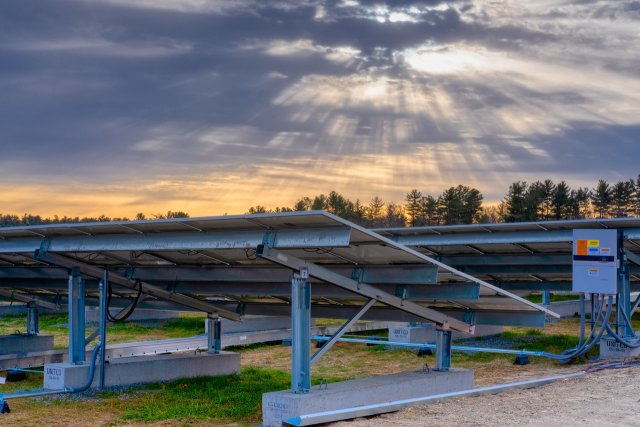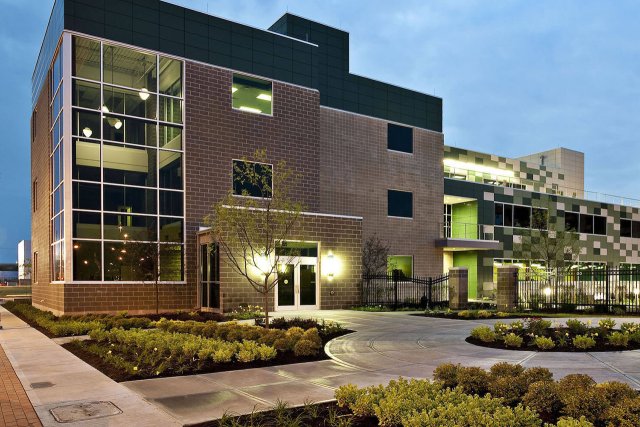Appendix B: Renewable Energy Technology Basics
EPA evaluated the following renewable energy technologies for this analysis. They represent the most common types of renewable energy facilities being used as of 2021. This is not an inclusive list of all renewable energy technologies; new technologies continue to be developed, while established technologies are refined.
Solar
Solar resource at a given location is typically characterized by the amount of solar energy striking a panel tilted up from the horizontal at an angle equal to the local latitude over a given area and reported as a daily average. Solar radiation is measured in kilowatt-hours per square meter per day (kWh/m2/day).
PV cells convert the sun’s light energy directly into electricity. PV technology is scalable; the amount of electricity generated is directly related to the number and efficiency of installed panels. It can technically be sited anywhere, though the economics may make a project unfeasible in lower resource areas.
See solar technologies for more information.

Wind
Wind energy is captured by wind turbines with propeller-like blades mounted on a tower. The force of the wind causes the rotor to spin, and the turning shaft spins a turbine to generate electricity. Wind technology is scalable; based on site conditions, different turbines designs can be used to meet different electricity needs.
Wind resource is typically characterized by average wind speed (meters per second) at a given height. The resource data are selected based on the turbine size. For example, utility-scale turbines with hub heights ranging from 80–90 meters (m) generally reference the wind resource data at 80 m for initial screening.
See wind technologies for more information.

Biomass
Biomass energy, or “bioenergy,” is generated from organic feedstocks. Wood is the most abundant and commonly used biomass energy resource; other sources of biomass include food crops, grassy and woody plants, residues from agriculture or forestry and the organic component of municipal and industrial wastes. These feedstocks can be used as a solid fuel, or converted into liquid or gaseous forms, for the production of electric power, heat, chemicals or fuels.
A biopower facility burns biomass resources to produce heat, which is used to boil water for a conventional steam-turbine generator to produce electricity. Biopower facilities use cumulative biomass resources that can include residues from forests, primary and secondary mills and urban wood waste.
A biorefinery facility integrates biomass conversion processes and equipment to produce fuels, power and chemicals from biomass. The technology uses cumulative crop residues that can include residues from crops or forests, primary and secondary mills and urban wood waste.
See biomass technologies for more information.
Energy can also be generated by capturing methane and other emissions from landfills. See EPA’s Landfill Methane Outreach Program for more information about landfill gas energy technologies.

Geothermal
Geothermal resource is typically characterized by temperature at a given depth, availability of water resources and permeability of geologic layers.
A geothermal heat pump (GHP) system exchanges heat in the shallow subsurface. In most locations without permafrost, the upper 10 feet of the Earth maintains a nearly constant temperature between 50° and 60°F (10°–16°C). GHPs take advantage of this resource to heat and cool buildings and heat water. GHPs consist of three parts: the ground loop heat exchanger, the heat pump unit and the air delivery system (ductwork). The ground loop heat exchanger is a system of pipes buried in the shallow ground near the building, or in a vertical well if land for a horizontal loop is limited. Water source heat pumps work on the same principle as ground source systems, but they use an adjacent body of water as the heat sink. A fluid (usually water or a mixture of water and antifreeze) circulates through the loop to absorb or reject heat from the ground. GHPs use much less energy than conventional heating systems since they draw heat from the ground, avoiding the high and low swings of ambient air temperatures. GHPs typically serve a single property, though they may also be viable for use in multi-tenant applications, such as integrated district heating systems.
Visit the DOE Energy Efficiency and Renewable Energy Geothermal Technologies Office for more information. See the NREL Geothermal Prospector additional information about a site’s geothermal favorability or hydrothermal potential.

